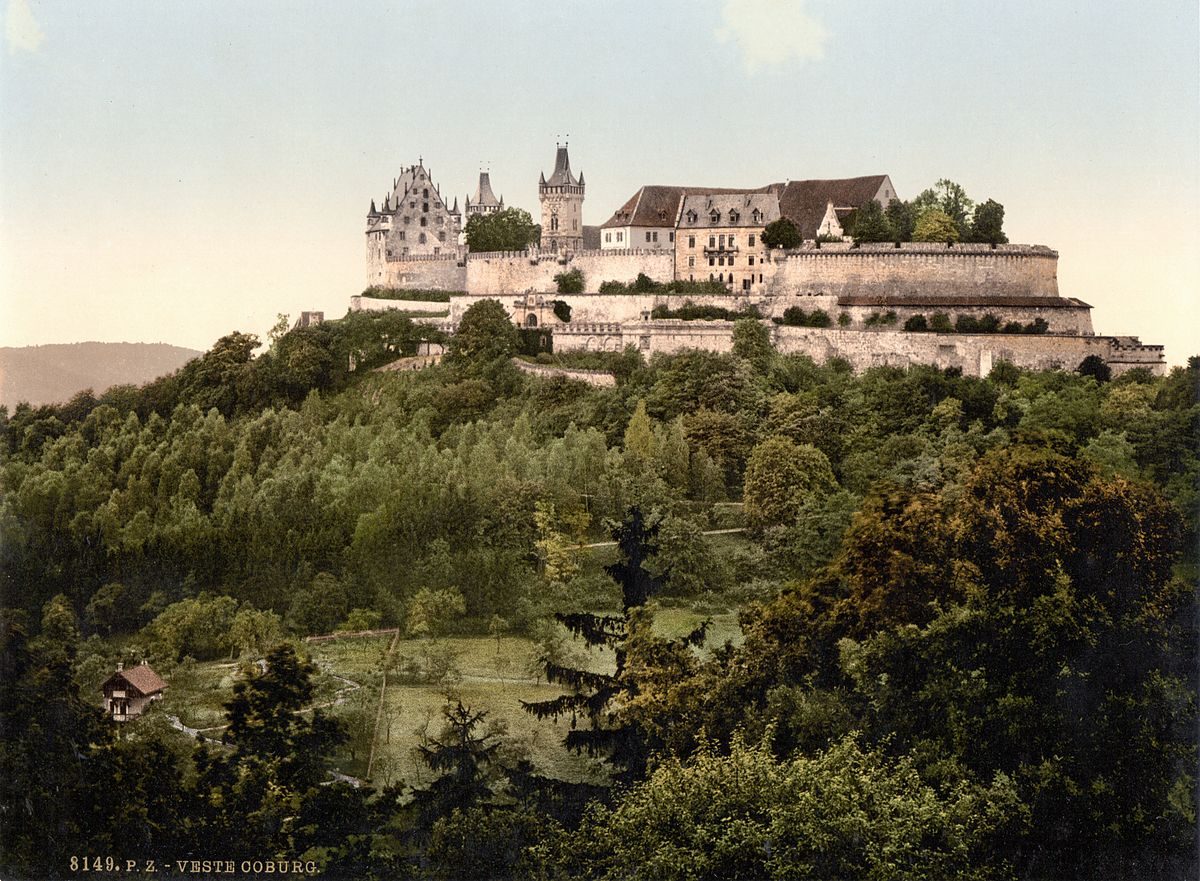On a hill above the town of Coburg, in the Upper Franconia, Veste Coburg is one of the largest castles in Germany. The hill overlooked the important trade route from Nuremberg via Erfurt to Leipzig.
The Imperial Abbey in Saalfeld, Thuringia founded in 1071 was administered from Coburg.
From 1225, the town was controlled by the Dukes of Merania, followed in 1248 by the Counts of Henneberg, who ruled Coburg until 1353, except from 1292 to 1312, when the House of Anhalt was in charge.
The castle passed to the House of Wettin with the marriage of Catherine of Henneberg and became their outpost in Franconia.
During the Diet of Augsburg in 1530, Martin Luther spent six months at the castle, while the Elector of Saxony attended the Diet. Luther was forbidden to attend by the Elector, who feared that he would be imprisoned and burned as a heretic. While at the castle, Luther continued with his translation of the Bible into German.
Leopold Frederick was born Prince of Saxe-Coburg-Saalfeld and become the King of Belgium in 1831. Prince Albert of Saxe-Coburg and Gotha married his first cousin, Queen Victoria in 1840. After her marriage, Queen Victoria said of Coburg:
“If I were not who I am, this would have been my real home, but I shall always consider it my second one.”
Queen Victoria made six visits to Coburg during her 63-year reign. A visit in 1894 brought together Queen Victoria, her son Edward (future Edward VII), her second son Alfred (Duke of Saxe-Coburg-Gotha), her daughter the German dowager Empress Friedrich (Victoria), and many of her grandchildren, including Kaiser Wilhelm II of Germany, and the future King George V of Britain.
In a November 1919 referendum, the locals voted to join Bavaria with an 88% majority. On 1 July 1920, Coburg became part of the new state of Bavaria.
